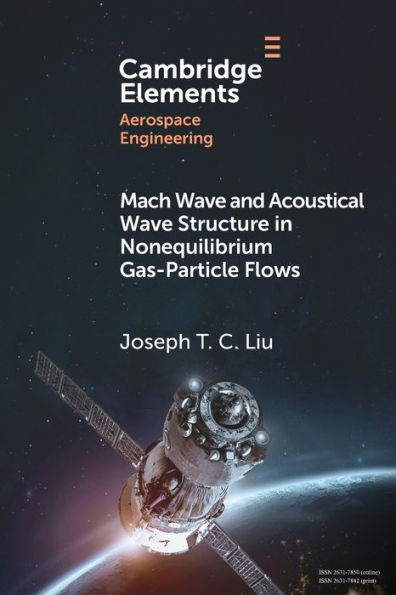Mach Wave and Acoustical Wave Structure in Nonequilibrium Gas-Particle Flows
In this Element, the gas-particle flow problem is formulated with momentum and thermal slip that introduces two relaxation times. Starting from acoustical propagation in a medium in equilibrium, the relaxation-wave equation in airfoil coordinates is derived though a Galilean transformation for uniform flow. Steady planar small perturbation supersonic flow is studied in detail according to Whitham's higher-order waves. The signals owing to wall boundary conditions are damped along the frozen-Mach wave, and are both damped and diffusive along an effective-intermediate Mach wave and diffusive along the equilibrium Mach wave where the bulk of the disturbance propagates. The surface pressure coefficient is obtained exactly for small-disturbance theory, but it is considerably simplified for the small particle-to-gas mass loading approximation, equivalent to a simple-wave approximation. Other relaxation-wave problems are discussed. Martian dust-storm properties in terms of gas-particle flow parameters are estimated.
1138526116
Mach Wave and Acoustical Wave Structure in Nonequilibrium Gas-Particle Flows
In this Element, the gas-particle flow problem is formulated with momentum and thermal slip that introduces two relaxation times. Starting from acoustical propagation in a medium in equilibrium, the relaxation-wave equation in airfoil coordinates is derived though a Galilean transformation for uniform flow. Steady planar small perturbation supersonic flow is studied in detail according to Whitham's higher-order waves. The signals owing to wall boundary conditions are damped along the frozen-Mach wave, and are both damped and diffusive along an effective-intermediate Mach wave and diffusive along the equilibrium Mach wave where the bulk of the disturbance propagates. The surface pressure coefficient is obtained exactly for small-disturbance theory, but it is considerably simplified for the small particle-to-gas mass loading approximation, equivalent to a simple-wave approximation. Other relaxation-wave problems are discussed. Martian dust-storm properties in terms of gas-particle flow parameters are estimated.
23.0
In Stock
5
1

Mach Wave and Acoustical Wave Structure in Nonequilibrium Gas-Particle Flows
78
Mach Wave and Acoustical Wave Structure in Nonequilibrium Gas-Particle Flows
78Paperback
$23.00
23.0
In Stock

Product Details
| ISBN-13: | 9781108964883 |
|---|---|
| Publisher: | Cambridge University Press |
| Publication date: | 10/07/2021 |
| Series: | Elements in Aerospace Engineering |
| Pages: | 78 |
| Product dimensions: | 5.98(w) x 8.98(h) x 0.20(d) |
From the B&N Reads Blog
